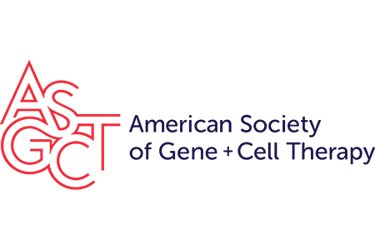2020 Gene Therapy Progress Wrap-Up
By Edith Pfister, Ph.D., assistant professor, University of Massachusetts Medical School, chair, ASGCT Communications Committee

Over the past 12 months the news has been dominated by the worldwide COVID-19 pandemic, but the work to bring gene and cell therapies to patients has not stopped. Here is a rundown of some of the most interesting developments in gene and cell therapy for the year.
EMA Approves Second RNAi Therapeutic (January 31)
Following approval in the United States Alnylam’s Givlaari (givosiran) became the second RNAi drug to be approved in both the European Union and the U.S. The drug, which is designed to treat acute hepatic porphyria, works by reducing the levels of aminolevulinic acid synthase 1 (ALAS1) mRNA in the liver, which reduces the buildup of aminolevulinic acid (ALA) and porphobilonogen (PBG). The approvals of givosiran and patisiran pave the way more drugs targeting previously un-targetable gain of function mutations using RNAi.
OHSU Researchers Perform First-Ever CRISPR Gene Editing In Vivo (March 4)
For the first time, a patient was treated with a CRISPR-based therapy in vivo. The treatment targets a point mutation in the CEP290 gene, which causes loss of function of CEP20 leading to a form of Leber’s congenital amaurosis (LCA). The drug, from Editas Medicine and Allergan, consists of an AAV5 vector carrying two guide RNAs and encoding a copy of the Staphylococcus aureus Cas9 under a photoreceptor specific promoter. The vector is delivered by subretinal injection.
Two XLMTM Patients Die During a Gene Therapy Clinical Trial (June 23)
Two patients receiving a high dose of AAV in Audentes Therapeutics clinical trial for X-linked myotubular myopathy died from complications related to progressive liver dysfunction. The patients were known to have pre-existing liver disease, but nevertheless the clinical trial was put on hold. A third patient in the high dose group later died of gastrointestinal bleeding.
FDA Approves CAR T-Cell Therapy Tecartus (July 24)
The FDA approved Kite Therapeutics’ Tecartus, a CAR-T cell therapy for relapsed or refractory mantle cell lymphoma. Tecartus joins Yescarta and Kymriah as one of only three FDA approved CAR-T therapies.
Charpentier and Doudna Receive Nobel Prize in Chemistry for CRISPR-Cas9 Discovery (October 7)
Emmanuelle Charpentier, Ph.D., and Jennifer Doudna, Ph.D., received the 2020 Nobel Prize in Chemistry for discovery and development of the genome editing tool CRISPR-Cas9. The discovery is revolutionizing gene therapy, opening a path toward potential cures for genetic diseases. In 2019, Victoria Gray became the first patient treated with CRISPR for sickle cell disease. A year in, she is doing well and indications are that the treatment is working. A second patient treated for β-thalassemia is also doing well. The approach involved removing the patients stem cells, editing them, and re-infusing them back into the patients after chemotherapy.
hATTR Patient Receives First in Vivo CRISPR Treatment Intravenously (November 9)
2020 also saw the first patient treated systemically with CRISPR. The therapy — developed by Intellia Therapeutics — is designed as a potential cure for hereditary transthyretin amyloidosis (hATTR). hATTR is caused by a mutation in the TTR gene, which causes the protein to become misfolded and to accumulate. The CRISPR-based therapy comprises a lipid nanoparticle containing a guide RNA and the messenger RNA coding for the Cas9. It is delivered via intravenous injection.
FDA Approves Emergency Use of Two mRNA COVID-19 Vaccines (December 11 and 18)
Finally, and maybe the most important news of 2020 is the development and approval of mRNA vaccines for Covid-19. While the Pfizer/BioNtech vaccine is the first approved mRNA vaccine, the concept is not new. However, there were significant technological hurdles that needed to be overcome to make them a viable option. The primary breakthroughs were the introduction of synthetic modifications which increase the stability and reduce the immunogenicity of the mRNA and the development of lipid nanoparticles which can enhance delivery. Already, mRNA vaccines are being tested for Ebola, Zika and influenza.
About ASGCT
The American Society of Gene & Cell Therapy is the primary professional membership organization for scientists, physicians, patient advocates, and other professionals with interest in gene and cell therapy. Our members work in a wide range of settings including universities, hospitals, government agencies, foundations, biotechnology and pharmaceutical companies. ASGCT advances knowledge, awareness, and education leading to the discovery and clinical application of gene and cell therapies to alleviate human disease to benefit patients and society.
